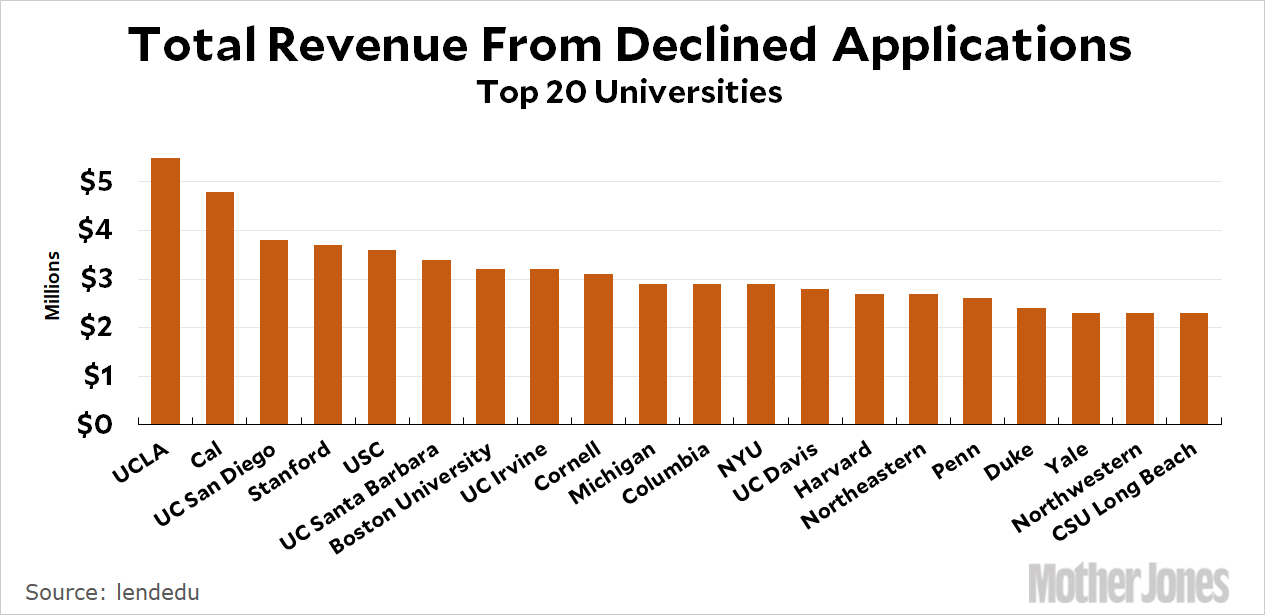I’ve gotten a couple of emails from an outfit called lendedu, which I guess is some kind of loan broker or something. Anyway, as an enticement to people like me, they have calculated which universities make the most money from declined applications. Here’s the top 20:

They suckered me into this because my alma mater made the list, over on the far right. My puny little state university makes loads of money from declined applications! Apparently CSU Long Beach receives 62,000 applications per year (!) but admits only about 20,000. That makes for 42,000 applicants annually who paid $55 but were eventually turned down. I have to say that I had no idea The Beach was such an exclusive institution. But times change.
Anyway, most of the disappointed applicants haven’t really wasted their money, since I assume they mostly end up at CSU Fullerton or CSU Dominguez Hills or some other nearby campus.
Another interesting factoid: All of the top six and nearly half of the top 20 are in California. Is this because UC has such a great reputation? Or because our weather and partying have such a great reputation? Or both?













